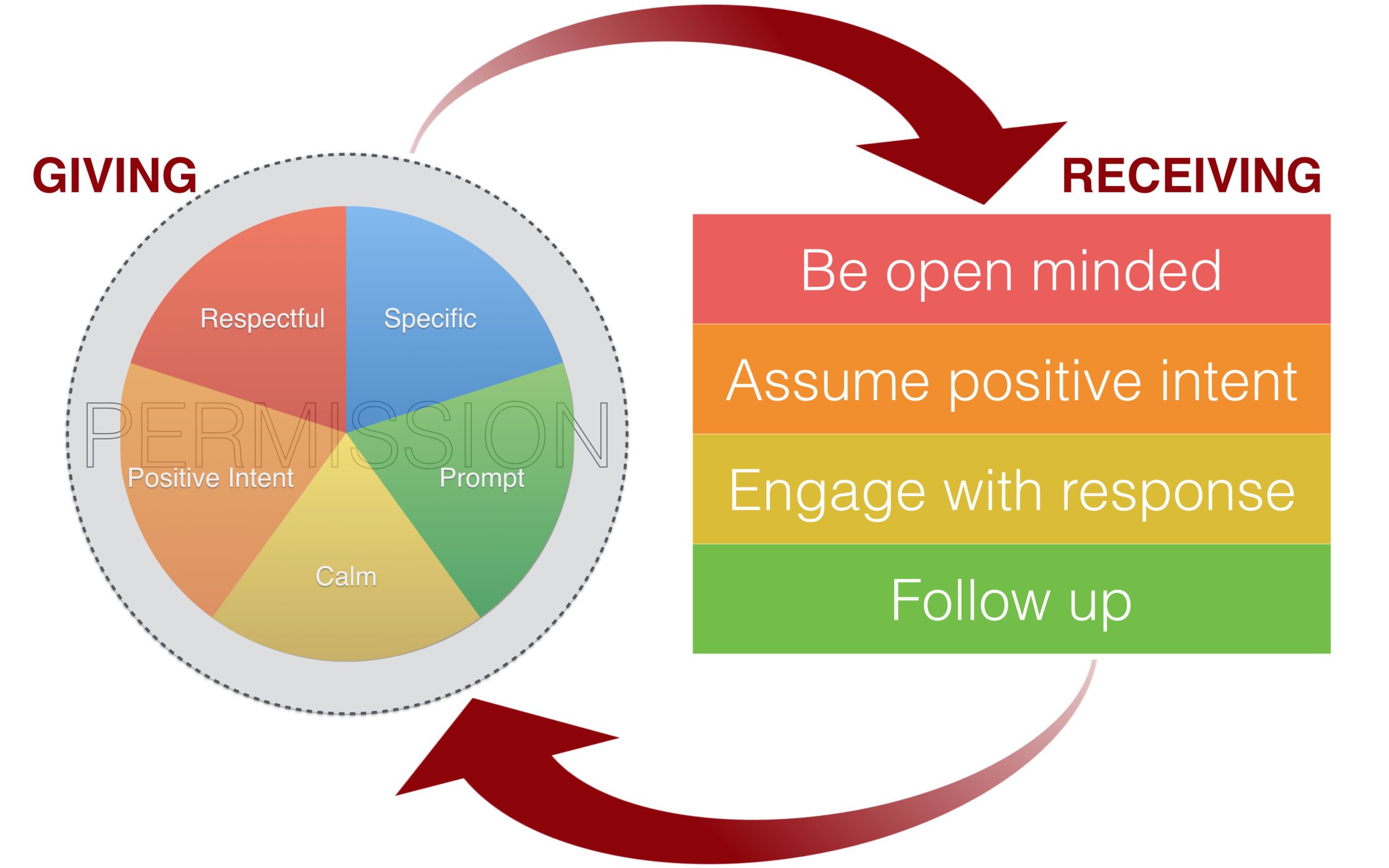4 Ways to Leverage Any Feedback
The stages of receiving feedback effectively
We all receive feedback, all day long. Some of it is positive, some is negative. Some of it is great, some of it is terrible and useless. With a little thinking, you can realize that all feedback - even the terrible feedback - can hold value and be leveraged. By keeping these four things in mind when receiving any kind of feedback, you can leverage it and use it for your benefit.
1) Have an open mind
Like many things in life, having an open mind goes a long way when taking in feedback. It isn't always easy. Especially in cases of negative feedback, we tend to close our minds to what is said and become defensive. No one said accepting criticism is easy, but without an open mind, the true intent cannot be realized. When someone is delivering feedback, open up, make eye contact, and listen - no matter what. You might be surprised at what you hear, and how you hear it.
2) Always assume positive intent
Much like positive intent is crucial to delivering effective feedback, assuming positive intent when receiving feedback is just as critical. Not everyone is good at giving feedback eloquently. People known as "straight shooters" who don't mince words are often those we struggle to be open to, the ones who plainly say, "it was awful." Rather than shy away or dwell on these harsh words with defensiveness or internal melancholy, offer a doorway to dialogue instead by engaging with a response.
3) Engage with a stimulating response
Once feedback has been delivered, it's important to respond. However, any response should be inviting conversation and interaction. There's nothing bad about a simple "thank you" for feedback, but where does that go? Nowhere. It ends the conversation, and therefore the opportunity for growth and development. Find stimulating ways to respond and open that doorway to dialogue to build rapport and connections.
Here are some thoughtful responses to both positive and negative feedback:
"I'm disappointed that the outcome wasn't what you expected. Would you mind sharing some specifics? I'd like to improve my results, and any suggestions you have would be most helpful!"
"Thank you! I'm so glad you enjoyed the presentation. Were there any portions that really stuck out to you?"
"I appreciate you taking the time to respond with feedback on my report. I made the changes you suggested - would you mind taking one more glance at it?"
"I definitely felt unprepared for the meeting. I have had a lot on my plate recently and did not prioritize my tasks in the best way. I'm sorry and I'll adjust my time management moving forward."
There are so many ways to establish dialogue and connect with others. In particular, look for suggestions from those delivering feedback - these tips are team-building gold.
4) Follow up with results or improvements
One of the most impactful moments of growth in my career came from a presentation I was working on for a conference. I had put a Keynote together full of information, like so many Keynotes I had done in the past. I decided to show it to a coworker, who very quickly made his disdain known. Using tips from this article, the conversation went something like this:
"This has tons of information, but its just text. If I'm attending a session, I don't want to just look at text and clip art. I would change this entirely."
"Oh...this is how I've always done my presentations. Thanks for your honesty. Do you have any suggestions on how I can improve this?"
"Look up 'picture superiority effect.' By making your Keynote less "texty" and more visual, people will focus more on what matters - you, as the speaker."
"I see... out of curiosity, have you ever used this style in presentations yourself?"
"I have, and I'll be happy to share one with you."
Long story short – an open mind, positive intent, and an engaging response led to the two of us collaborating as I re-did my entire presentation. I travelled to the conference and delivered my session, and it was wonderful! All kinds of great feedback about my speaking and visuals. I was so thankful, and I needed to make sure he knew, so I followed up:
"I wanted to follow up with you about my presentation in Long Beach. It could not have gone any better. I received so much positive feedback about the visuals, and attendees were more focused on my message as a result. I can't thank you enough for your help!"
Whether from positive or negative feedback, following up with results or improvements is the ultimate connection tool. By following up, we reinforce all of the amazing actions and behavior that surround good, effective feedback. It enables everyone involved to give more feedback, and be more open when receiving it. In essence, we create a feedback cycle that serves to create stronger bonds and trust in each other.
Create your own feedback cycle.
By making an investment in how you deliver and receive feedback of all kinds, you are making the best possible investment in your growth and development. The feedback cycle is the key to building connections and trust with your coworkers and colleagues. Each time you give feedback, ask yourself, how will this feedback contribute to a feedback cycle? When you receive feedback, ask, how can I establish a feedback cycle from this? With practice, you'll be a feedback pro before you know it.
Questions? Comments? Reach out


